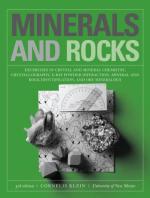|
This section contains 1,504 words (approx. 6 pages at 300 words per page) |

|
Crystallography is the study of materials in which the atoms stack in a three-dimensionally ordered geometric arrangement. In a single crystal a single pattern extends throughout the entire material. Polycrystalline materials have discontinuities in the periodicity of the material. In amorphous materials, there is still less periodicity within the material; the amount of non-ordered atoms in amorphous materials is at least comparable with that exhibiting periodicity.
Detailed analyses of crystal structures are carried out by x-ray diffraction. In 1912, Max von Laue predicted that the spacing of crystal layers is small enough to diffract light of the appropriate wavelength. William Henry Bragg and his son, William Lawrence Bragg, were awarded the Nobel Prize in chemistry (1915) for their development of crystal structure analysis using x-ray diffraction. The Braggs' found that when x-ray radiation was scattered by a crystalline material both constructive and destructive interference occurred; this interference occurs because the...
|
This section contains 1,504 words (approx. 6 pages at 300 words per page) |

|


